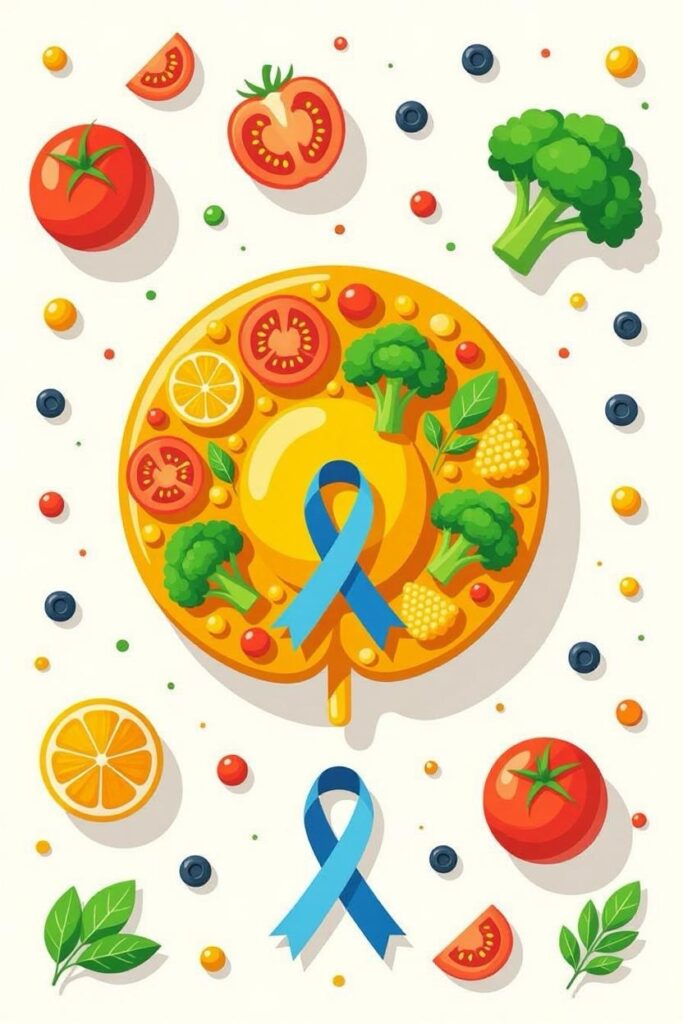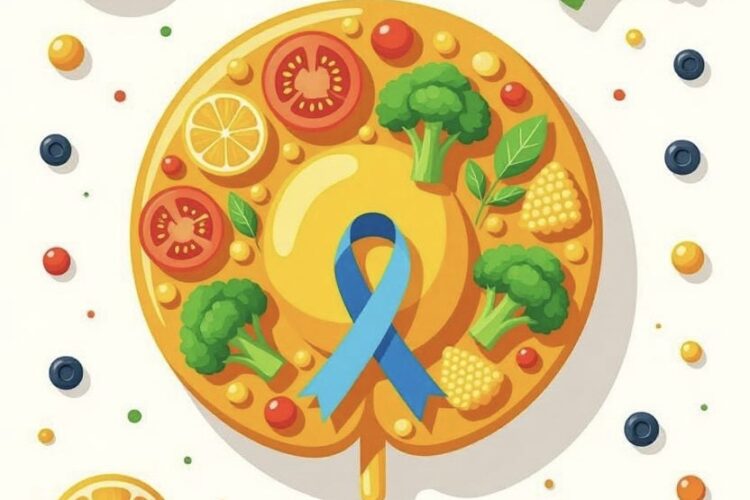Prostate cancer, a common cancer in men, often grows slowly but can become aggressive, spreading to other areas. It affects the prostate gland, which produces seminal fluid. Risk factors include age (over 65), African descent, family history, obesity, smoking, and poor diet. Early stages may show no symptoms, but later signs include trouble urinating, frequent urination, blood in urine or semen, bone pain, and erectile dysfunction. Screening uses PSA tests and digital rectal exams, with biopsies and imaging like MRI or PSMA PET for diagnosis. Treatments range from active surveillance for low-risk cases to surgery (prostatectomy), radiation, hormone therapy, chemotherapy, immunotherapy, or targeted therapies like PARP inhibitors. Natural prevention includes a Mediterranean diet with tomatoes, soy, broccoli, green tea, and supplements like lycopene, vitamin D, and omega-3s. Exercise, weight control, and quitting smoking help lower risk. Consult a doctor for personalized advice.
Long Version
Understanding Prostate Cancer: Symptoms, Treatment, and Natural Prevention
Prostate cancer remains one of the most prevalent cancers among men, often developing slowly and confined to the prostate gland, where it may not cause serious harm. However, some forms can be aggressive, leading to metastasis and advanced prostate cancer, including castration-resistant prostate cancer (CRPC). Early detection through screening is crucial, as survival rates improve significantly with timely intervention.
The prostate, a walnut-sized gland below the bladder and in front of the rectum, produces seminal fluid. Conditions like benign prostatic hyperplasia (BPH) can mimic symptoms but are non-cancerous. Ongoing research highlights genetic factors, such as inherited gene changes, and environmental influences in its development.
Risk Factors: Who Is Most Vulnerable?
Age stands out as the primary risk factor; about 60% of cases are diagnosed in men over 65, with the average age at diagnosis around 66. Race and ethnicity play significant roles—men of African descent face higher incidence and more aggressive forms. Family history and genetics amplify risk; a positive family history or mutations in genes like BRCA1/2 increase susceptibility.
Lifestyle elements contribute too: obesity, smoking, excessive alcohol consumption, and a diet high in red meat or high-fat dairy elevate chances. Conversely, regular exercise and maintaining a healthy weight offer protective effects. Epidemiologic studies and meta-analyses underscore these modifiable factors, emphasizing the role of lifestyle in prevention.
Symptoms: Recognizing the Warning Signs
Early-stage prostate cancer often presents no symptoms, making screening vital. As the disease progresses, urinary issues emerge: trouble urinating, frequent urination (especially nocturia), weak urine stream, difficulty starting urination, decreased force in urine stream, and pain or burning during urination. Blood in urine (hematuria) or blood in semen signal potential problems.
Advanced symptoms include bone pain, back pain, pelvic pain, erectile dysfunction (ED), urinary incontinence, fatigue, weight loss, anemia, weakness in limbs, nausea, and vomiting. These arise when cancer spreads, affecting prognosis. Differentiating from BPH is key, as both can cause similar urinary changes.
Diagnosis and Screening: Tools for Early Detection
Screening involves prostate-specific antigen (PSA) testing and digital rectal exam (DRE). Elevated PSA prompts further evaluation: biopsy for Gleason score and grade group assessment. Imaging like MRI, CT scan, PET scan, PSMA PET, and bone scan detect metastasis.
PSMA PET has advanced diagnostics, improving accuracy for localized and advanced cases. Biomarkers such as androgen receptor (AR), AR splice variant 7 (AR-V7), dihydrotestosterone (DHT), and testosterone levels aid in tailoring approaches.
Treatment Options: From Conservative to Advanced Therapies
Treatment depends on stage, grade, and patient health. Active surveillance or watchful waiting suits low-risk cases. Surgery includes prostatectomy—radical, robotic, or laparoscopic—to remove the gland. Radiation therapy options encompass external beam radiation and brachytherapy.
For hormone-sensitive disease, androgen deprivation therapy (ADT) uses LHRH agonists, antiandrogens, or orchiectomy to block testosterone. Chemotherapy with docetaxel or cabazitaxel targets advanced stages. Immunotherapy like sipuleucel-T boosts immune response. Targeted therapy employs PARP inhibitors (olaparib, niraparib) for genetic mutations. Radiopharmaceuticals such as lutetium Lu-177 (Pluvicto) and radium Ra-223 deliver radiation directly to cancer cells.
Focal therapies—cryotherapy (cryoablation), high-intensity focused ultrasound (HIFU), laser ablation, and photodynamic therapy—minimize side effects like ED, incontinence, infertility, and peripheral neuropathy. Complementary treatments, including yoga, meditation, massage, acupuncture, and relaxation techniques, support overall well-being.
Advances include radioligand therapies like Actinium-225 trials, expanded neoadjuvant immunotherapy, and targeting proteins like FOXA2 and NKX2-1 to combat deadly forms. New vulnerabilities in cancer cells, such as ER stress and proteasome inhibition, are being exploited in clinical trials and randomized controlled trials (RCTs).
Natural Prevention: Lifestyle and Dietary Strategies
While no single method guarantees prevention, evidence from placebo-controlled studies supports lifestyle modifications. Maintain a healthy weight through exercise most days, aiming for weight loss if obese. Quit smoking and limit alcohol.
Adopt a low-fat, Mediterranean, or anti-inflammatory diet rich in fruits, vegetables, leafy greens, nuts, seeds, fish, and whole grains. Cruciferous vegetables like broccoli and cauliflower provide sulforaphane. Tomatoes, especially cooked, offer lycopene; soy products (tofu, miso, soy milk) contain isoflavones such as genistein, daidzein, and glycitein.
Antioxidants and phytochemicals shine: green tea’s EGCG, turmeric’s curcumin, resveratrol from grapes, quercetin in onions, apigenin in parsley, pterostilbene in blueberries, ursolic acid in apple peels, fisetin in strawberries, honokiol from magnolia, and tocotrienols (delta-tocotrienol, gamma-tocotrienol). Pomegranate juice or extract, modified citrus pectin (MCP), omega-3 fatty acids from wild salmon or cod liver oil, vitamin D from sun exposure, vitamin E (alpha-tocopherol, gamma-tocopherol), selenium, and minerals bolster defenses.
Herbs like ginger, rosemary, holy basil, oregano, Baikal skullcap, African cherry (Pygeum africanum), beta-sitosterol, saw palmetto, finasteride, dutasteride, red ginseng, and ginsenoside Rb1 show promise in studies. Shiitake mushrooms and phytoestrogens add benefits. Higher ejaculation frequency and sexual activity may correlate with lower risk.
Deeper Insights: Molecular Mechanisms and Prognosis
At the cellular level, prostate cancer involves pathways like PI3K/Akt/mTOR, NF-κB, Wnt/β-catenin, Hedgehog (Hh) signaling, EGFR signaling, and IGF axis. Processes such as apoptosis, autophagy, paraptosis, necrosis, Bax/Bcl-2 ratio shifts, caspase activation (3, 8, 9), PARP cleavage, p53, p21, p27 expression, ROS generation, and ER stress drive progression.
Epithelial-mesenchymal transition (EMT) involves Snail/Slug, E-cadherin loss, N-cadherin gain, MMP-2/MMP-9, and CD44. Angiogenesis relies on VEGF and HIF-1α; prostate cancer stem cells (PCSCs) sustain tumors. Non-coding RNAs like miRNA (miR-34a, miR-145, miR-221) and lncRNA (HOTAIR, lncRNA-ROR) regulate these. Cancer metabolism—glycolysis, glutaminolysis, de novo lipogenesis via SREBP-1, FASN, GLUT1/GLUT4—offers therapeutic targets.
Prognosis varies: early detection yields high survival rates, but advanced disease requires multimodal care. Ongoing clinical trials refine these approaches.
This comprehensive overview equips you with knowledge to navigate prostate cancer, from prevention to cutting-edge treatments. Consult healthcare professionals for personalized advice.

Hashtags For Social Media
#ProstateCancer #ProstateCancerAwareness #MensHealth #CancerPrevention #ProstateHealth #CancerSymptoms #ProstateCancerTreatment #NaturalPrevention #HealthTips #Urology #PSATest #EarlyDetection #CancerFighter #BeatCancer #HealthyLifestyle #DietForHealth #CancerResearch #Prostatectomy #RadiationTherapy #HormoneTherapy #Immunotherapy #TargetedTherapy #Antioxidants #Lycopene #GreenTea #Turmeric #Omega3 #VitaminD #SoyIsoflavones #Movember
Related Questions, Words, Phrases
what are symptoms of prostate cancer | how to treat prostate cancer | natural ways to prevent prostate cancer | prostate cancer signs and symptoms | best treatments for prostate cancer | herbal remedies for prostate cancer prevention | early prostate cancer symptoms | prostate cancer treatment options | can diet prevent prostate cancer | advanced prostate cancer symptoms | radiation therapy for prostate cancer | supplements to lower prostate cancer risk | what causes prostate cancer symptoms | surgery for prostate cancer | lifestyle changes to prevent prostate cancer naturally | blood in urine prostate cancer | hormone therapy prostate cancer treatment | green tea for prostate cancer prevention | prostate cancer back pain symptom | chemotherapy for advanced prostate cancer | vitamin d and prostate cancer prevention | frequent urination prostate cancer sign | targeted therapy for prostate cancer | turmeric curcumin prostate cancer prevention | erectile dysfunction from prostate cancer | immunotherapy options for prostate cancer | lycopene rich foods to prevent prostate cancer | psa test for prostate cancer symptoms | natural antioxidants against prostate cancer | bone pain in metastatic prostate cancer | focal therapy treatments for prostate cancer | soy isoflavones for prostate cancer risk reduction | how to detect prostate cancer early symptoms | alternative natural prevention strategies for prostate cancer | side effects of prostate cancer treatments






